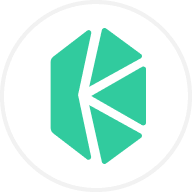Preço de Render
em USD$4,1000
-$0,19900 (-4,63%)
USD
Não foi possível encontrar. Verifique a ortografia ou experimente outro.
Capitalização do mercado
$2,12 mM #39
Oferta em circulação
518,13 M / 644,25 M
Máximo histórico
$11,8710
Volume em 24h
$105,12 M


Sobre Render
Aviso legal
Os conteúdos sociais nesta página ("Conteúdos"), que incluem, entre outros, os tweets e estatísticas fornecidos pela LunarCrush, provêm de terceiros e destinam-se a fins informativos conforme estão disponibilizados. A OKX não garante a qualidade ou a exatidão dos Conteúdos, sendo que os mesmos não representam as opiniões da OKX. Não visam fornecer (i) aconselhamento ou recomendações de investimento; (ii) uma oferta ou solicitação para comprar, vender ou deter ativos digitais; ou (iii) aconselhamento financeiro, contabilístico, jurídico ou fiscal. Os ativos digitais, incluindo criptomoedas estáveis e NFTs, envolvem um elevado grau de risco e podem sofrer grandes flutuações. O preço e o desempenho dos ativos digitais não são garantidos e podem mudar sem aviso.
A OKX não fornece recomendações de investimentos ou de ativos. Deve ponderar cuidadosamente se fazer trading ou deter ativos digitais é o mais adequado para si, tendo em conta a sua situação financeira. Informe-se junto do seu consultor jurídico/fiscal/de investimentos para esclarecer questões relativas às suas circunstâncias específicas. Para obter mais detalhes, consulte os nossos Termos de Utilização e o Aviso de Risco. Ao utilizar o site de terceiros ("TPW"), aceita que qualquer utilização do TPW está sujeita e será regida pelos termos do TPW. Salvo indicação expressa por escrito, a OKX e os seus afiliados ("OKX") não estão, de forma alguma, associados ao proprietário ou operador do TPW. Concorda que a OKX não é responsável nem imputável por quaisquer perdas, danos e outras consequências que advenham da sua utilização do TPW. Tenha presente que utilizar um TPW poderá resultar na perda ou diminuição dos seus ativos. O produto poderá não estar disponível em todas as jurisdições.
A OKX não fornece recomendações de investimentos ou de ativos. Deve ponderar cuidadosamente se fazer trading ou deter ativos digitais é o mais adequado para si, tendo em conta a sua situação financeira. Informe-se junto do seu consultor jurídico/fiscal/de investimentos para esclarecer questões relativas às suas circunstâncias específicas. Para obter mais detalhes, consulte os nossos Termos de Utilização e o Aviso de Risco. Ao utilizar o site de terceiros ("TPW"), aceita que qualquer utilização do TPW está sujeita e será regida pelos termos do TPW. Salvo indicação expressa por escrito, a OKX e os seus afiliados ("OKX") não estão, de forma alguma, associados ao proprietário ou operador do TPW. Concorda que a OKX não é responsável nem imputável por quaisquer perdas, danos e outras consequências que advenham da sua utilização do TPW. Tenha presente que utilizar um TPW poderá resultar na perda ou diminuição dos seus ativos. O produto poderá não estar disponível em todas as jurisdições.
Desempenho do preço de Render
Último ano
-34,77%
$6,29
3 meses
-8,18%
$4,47
30 dias
+28,20%
$3,20
7 dias
-11,68%
$4,64
70%
Atualizado todas as horas.
Mais pessoas estão a comprar RENDER do que a vender na OKX
Render nas redes sociais
Guias
Saiba como comprar Render
As primeiras experiências com as criptomoedas podem parecer intimidantes, mas aprender onde e como comprar criptomoedas é mais simples do que pensa.
Prever preços de Render
Qual será o valor de Render nos próximos anos? Veja as opiniões da comunidade e faça as suas previsões.
Ver histórico de preços de Render
Acompanhe o histórico de preços de Render para monitorizar o desempenho das suas detenções ao longo do tempo. Pode ver facilmente os valores de abertura e fecho, os máximos, os mínimos e o volume de trading utilizando a tabela abaixo.

Tenha Render em 3 passos
Crie uma conta OKX gratuita.
Financie a sua conta.
Escolha a sua cripto.
Perguntas frequentes sobre Render
Atualmente, um Render vale $4,1000. Para obter respostas e informações sobre a ação do preço de Render, está no sítio certo. Explore os gráficos Render mais recentes e transacione de forma responsável com a OKX.
As criptomoedas, como Render, são ativos digitais que operam num livro-razão público chamado blockchain. Saiba mais sobre as moedas e os tokens disponibilizados na OKX e os respetivos atributos diferentes, que inclui preços em direto e gráficos em tempo real.
Graças à crise financeira de 2008, o interesse em finanças descentralizadas aumentou. A Bitcoin proporcionou uma nova solução ao ser um ativo digital seguro numa rede descentralizada. Desde então, têm sido criados muitos outros tokens, como Render.
Veja a nossa Página de previsão do preço de Render para prever preços futuros e determinar os seus preços-alvo.
Explora as Render de forma mais detalhada
A Render Network é uma fornecedora de soluções de renderização descentralizada baseada em GPU. Fornece poder de computação descentralizado para a criação de conteúdos 3D de última geração, e o RNDR é o seu token utilitário nativo.
Divulgação ASG
Os regulamentos ASG (ambientais, sociais e de governação) para criptoativos visam abordar o seu impacto ambiental (por exemplo, mineração intensiva em termos de energia), promover a transparência e garantir práticas de governação éticas para alinhar a indústria das criptomoedas com objetivos sociais e de sustentabilidade mais amplos. Estes regulamentos incentivam a conformidade com normas que mitigam riscos e promovem a confiança nos ativos digitais.
Capitalização do mercado
$2,12 mM #39
Oferta em circulação
518,13 M / 644,25 M
Máximo histórico
$11,8710
Volume em 24h
$105,12 M


































